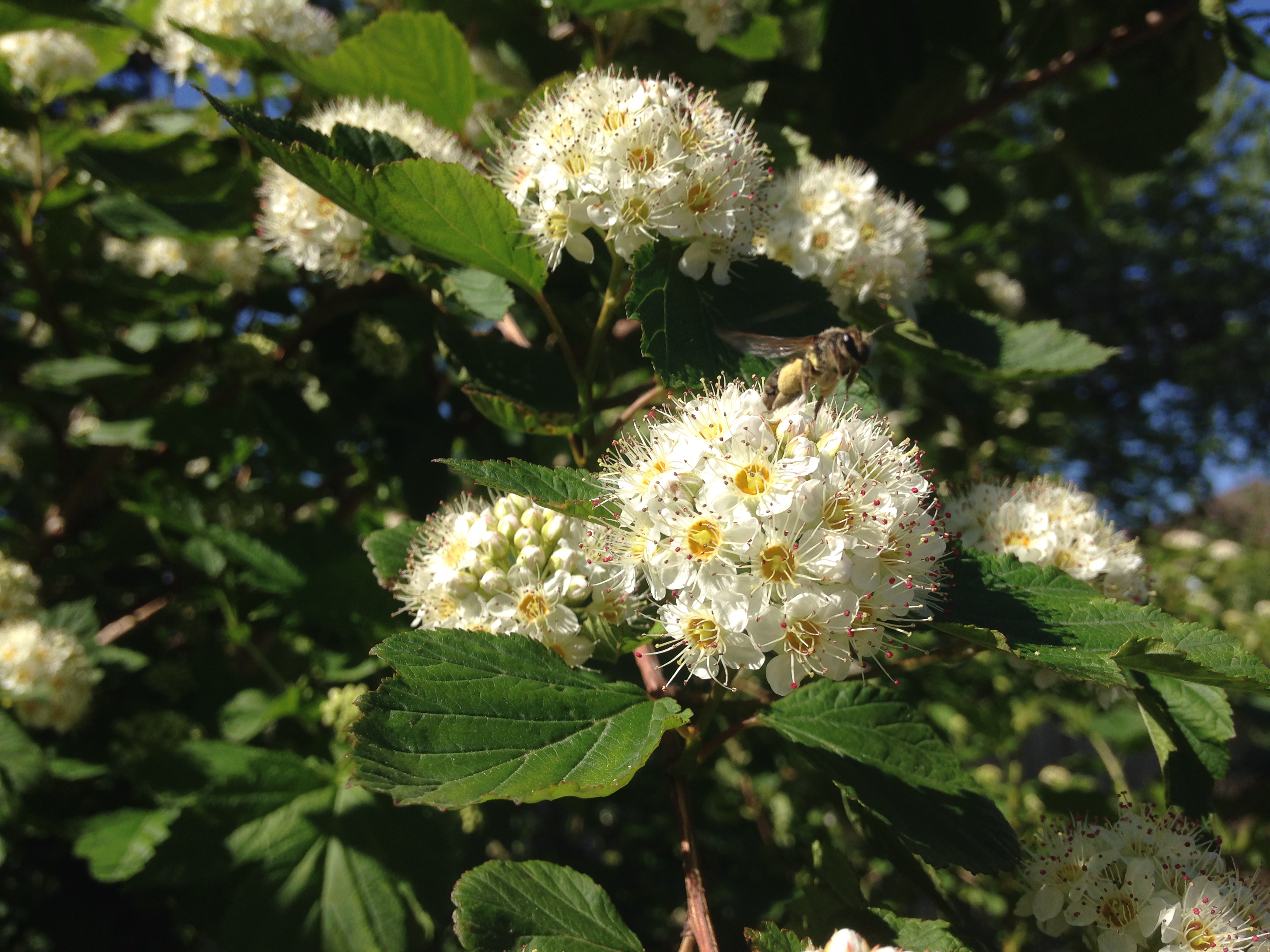Shrubs provide an abundance of flowers on one plant, reducing the time and energy bees need to spend moving from flower to flower. And as an added bonus for us, they have great multi-seasonal interest! Here are three native shrubs that will help support our bees while providing you with beauty as the seasons shift.
Fragrant sumac (Rhus aromatic)
The fragrant sumac is a lovely shrub with both practical purpose and visual interest in all seasons. The flowers bloom in early spring and are a great source of nectar for native bees and butterflies. The berries which mature in late summer are an important food source for many birds and small mammals.


The ripe berries are tart and can be made into a tea similar to lemonade. Yum!
Common Ninebark (Physocarpus opulifolius)
This lovely shrub has flowers that emerge in dense, white clusters in late spring. They are an attractive nectar source for butterflies and native bees.

The leaves turn a bright yellow in the fall, before dropping to the ground to showcase the shrub’s distinctive, peeling bark. Ninebark fruit sometimes persists throughout the winter, in the form of papery, inflated seed capsules that are pinkish-red in colour.

Although not edible for humans, the fruit is a good food source for many bird species. This hardy shrub tolerates a variety of soil conditions, so it can be planted in many places.
Common elderberry
The common elderberry , also known as the American or black elderberry, is a large- growing shrub that can reach up to 4 metres tall! Its lovely and delicate flowers bloom during mid to late July. The flowers are white with five oval petals and yellow-tipped stamens that alternate in arrangement when seen from the top down. They can be extremely plentiful once the shrub is established. The flowers, once pollinated by native bees, transform into massive bunches of blue-black berries.

The berries make excellent pies and jellies – yum! Loved by birds, and high in vitamin C, elderberries should be consumed by humans only when ripe and cooked or processed.

Some species of carpenter and mason bees burrow inside broken stems of the elderberry and use them as a home and nest for their larvae. So “bee” kind and leave some behind when pruning; your reward will be all that fruit next growing season!
Want to learn more and share your bee-friendly garden photos? Follow us on Twitter (@leaf) and Facebook (@Local Enhancement and Appreciation of Forests) using the hashtag #BeesLoveTrees. Or sign up for our free e-newsletter and check out our BeesLoveTrees webpage for more information!
The #BeesLoveTrees campaign is supported by the Ontario Power Generation Regional Biodiversity Program.
Jillaine Yee is LEAF’s Communications and Fundraising Coordinator.
